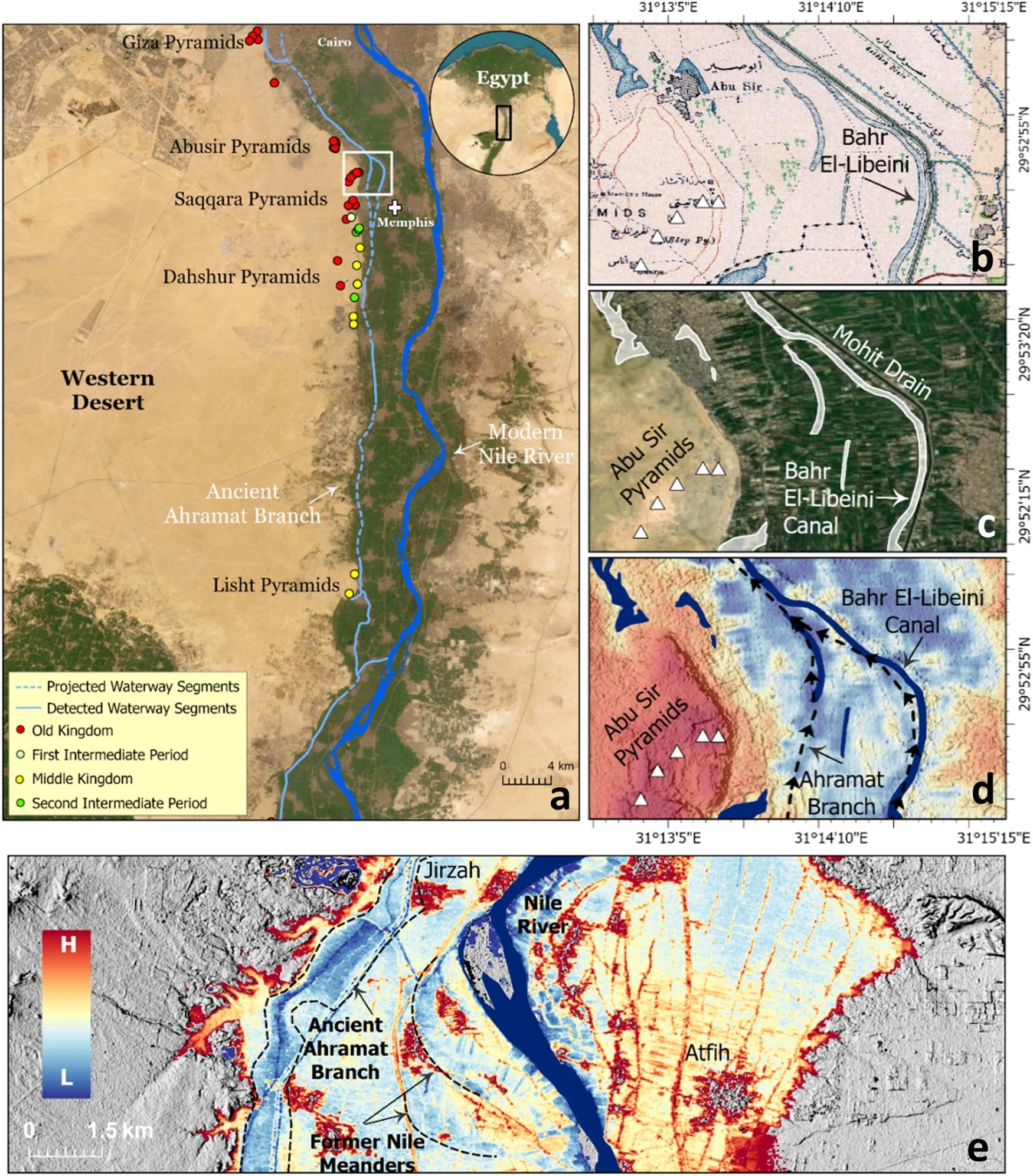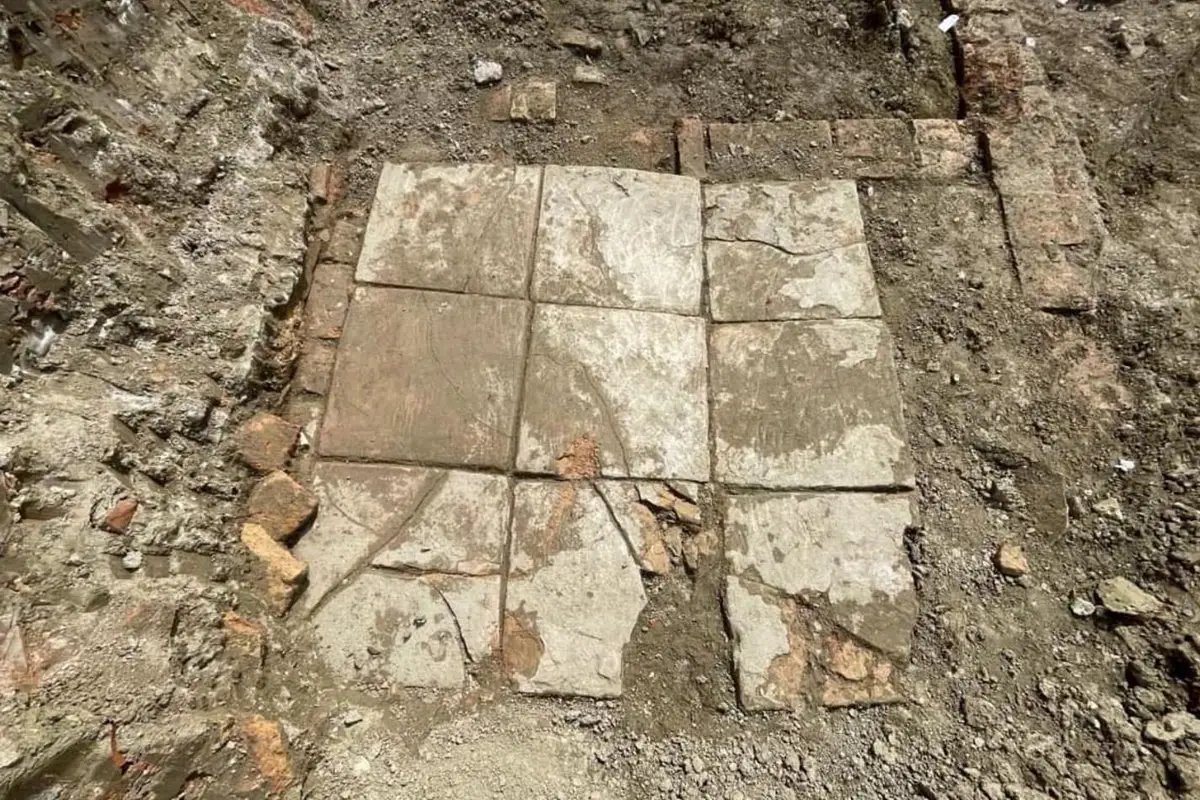Archaeology
Search for Saint Guthlac’s hermitage reveals prehistoric henge
A team of archaeologists from Newcastle University have uncovered a prehistoric henge during a search for Saint Guthlac’s hermitage.
Saint Guthlac was a Christian hermit and saint, who in AD 699-701, established a hermitage on what was a deserted island in the Fenlands at Crowland, England.
The biographer, a monk known as Felix, provides an account of Guthlac’s isolation in the Vita Sancti Guthlaci (Life of Saint Guthlac), and said that Guthlac built his hermitage into a robbed out prehistoric barrow mound.
According to tradition, Guthlac led a holy ascetic life and gave sanctuary to Æthelbald, future king of Mercia, who was fleeing from his cousin Ceolred.
After Guthlac’s death in 714, his uncorrupted body was discovered 12 months later that inspired a small monastic community and cult. This led to the establishment of Crowland Abbey in the 10th century to honour the saint, which survived until the Dissolution in the 1530s.
Archaeologists have previously tried to find the hermitage and barrow from Felix’s accounts, which have long been thought to be in Anchor Church Field to the north-east of Crowland.
Recent excavations at Anchor Church Field by archaeologists from Newcastle University and the University of Sheffield have uncovered a previously unknown Late Neolithic or early Bronze Age henge, a type of circular earthwork and one of the largest ever discovered in eastern England.
It is likely that during Guthlac’s time, the henge would have been a prominent feature above the marshes of the Fenlands, and would be seen by hermits as a unique landscape with a long and sacred past.
Archaeological evidence indicates that the henge was reoccupied during around Guthlac’s lifetime, indicated by large quantities of ceramics, bone combs, and fragments of high-status drinking vessels from the Anglo Saxon period.
Unfortunately, any traces of structures from this period have been destroyed through later activity.
“We know that many prehistoric monuments were reused by the Anglo-Saxons, but to find a henge—especially one that was previously unknown—occupied in this way is really quite rare,” said Dr Duncan Wright, Lecturer in Medieval Archaeology at Newcastle University.
“Although the Anglo-Saxon objects we found cannot be linked with Guthlac with any certainty, the use of the site around this time and later in the medieval period adds weight to the idea that Crowland was a sacred space at different times over millennia,” added Dr Wright.
Excavations also uncovered the remains of a 12th century hall and chapel, built by the Abbots of Crowland probably to venerate St Pega, Guthlac’s sister, who was herself an important hermit in the region. The hall would have been used for elite accommodation, perhaps for high-status pilgrims who were visiting Crowland.
Header Image Credit: The Anchor Church Field Project
Sources : Newcastle University | Sacred Landscapes and Deep Time: Mobility, Memory, and Monasticism on Crowland’ by Duncan W. Wright and Hugh Willmott. Journal of Field Archaeology DOI: 10.1080/00934690.2024.2332853
This content was originally published on www.heritagedaily.com – © 2023 – HeritageDaily
Archaeology
Groundbreaking study reveals new insights into chosen locations of pyramids’ sites

A groundbreaking study, published in the journal Communications Earth & Environment, has revealed why the largest concentration of pyramids in Egypt were built along a narrow desert strip.
Since the beginning of the Pharaonic era, the Nile River has played a fundamental role in the rapid growth and expansion of the Egyptian civilisation.
The Nile provided sustenance and functioned as the primary mode of transportation for goods and building materials, which explains why most of the main cities of the Egyptian civilisation were built in close proximity to the banks of the Nile and its peripheral branches.
Over the centuries, the primary channel of the Nile shifted laterally, causing these peripheral branches to silt up. As a result, population centres were cut off from the vital resources the river provided.
Image Credit : Eman Ghoneim et al
This is apparent with the pyramids along the Western Desert Plateau, where a majority of the pyramids are concentrated along a narrow desert strip several kilometres from the current primary channel of the Nile.
Using a combination of radar satellite imagery, geophysical data, and deep soil coring, the study has investigated the subsurface structure and sedimentology in the Nile Valley adjacent to the pyramid clusters.
This has revealed an extinct branch of the primary channel called the Ahramat Branch, which was connected to the pyramids of the Old and Middle Kingdoms via causeways and their Valley Temples.
According to the study authors: “The Ahramat Branch played a role in the monuments’ construction and was simultaneously active and used as a transportation waterway for workmen and building materials to the pyramids’ sites.”
The eastward migration and abandonment of the Ahramat Branch could be attributed to gradual movement of the river to the lower-lying adjacent floodplain or tilting of the Nile floodplain toward the northeast as a result of tectonic activity, as well as windblown sand incursion due to the branch’s proximity to the Western Desert Plateau.
Header Image Credit : Eman Ghoneim et al
Sources : Ghoneim, E., Ralph, T.J., Onstine, S. et al. The Egyptian pyramid chain was built along the now abandoned Ahramat Nile Branch. Commun Earth Environ 5, 233 (2024). https://doi.org/10.1038/s43247-024-01379-7
This content was originally published on www.heritagedaily.com – © 2023 – HeritageDaily
Archaeology
Archaeologists find Roman villa with ornate indoor plunge pool

Archaeologists from the National Institute of Cultural Heritage have uncovered a Roman villa with an indoor plunge pool during excavations at the port city of Durrës, Albania.
During antiquity, Durrës was founded by Ancient Greek colonists from Corinth and Corcyra.
The colony emerged into a major trading centre, which during the Roman period was annexed into the expanding territory of the Roman Republic following the conclusion of the Illyrian Wars.
By the 4th century, the city (named Dyrrachium), emerged as the capital of the Roman province of Epirus nova, covering the region of Ancient Epirus.
Image Credit : IKTK
Archaeologists excavating a former residential part of the ancient city have uncovered a high status Roman villa that dates from between the 1st and 4th century AD.
The villa interior contains an indoor pool, richly decorated with frescoes on the walls and mosaic flooring with tiles and inlays of marble, stone, glass and ceramics. Located adjacent to the pool are shallow square basins lined with waterproof mortar, believed to be the remains of an ancient water feature.
Within the northern area of the excavation site, archaeologists found a large brick floor from a thermae, a Roman bath, and further traces of walls from the wider complex.
In the western area, the team discovered fragments of relief stucco that was used to decorate the walls and ceilings of the villa. The reliefs depict anthropomorphic and floral motifs, further indicating the wealth of the villa inhabitants.
According to the archaeologists, the villa was destroyed by an earthquake in the 4th century, corresponding with ancient sources that describe a powerful earthquake causing buildings to collapse and the city defences to crumble.
Header Image Credit : IKTK
Sources : National Institute of Cultural Heritage
This content was originally published on www.heritagedaily.com – © 2023 – HeritageDaily
-

 Ghosts2 years ago
Ghosts2 years agoZozo: The Ouija Board Demon
-

 Space2 years ago
Space2 years agoScientists claim to have found the answer what existed before the Universe
-

 Ghosts2 years ago
Ghosts2 years agoOld Coot of Mount Greylock
-
Archaeology1 year ago
New discoveries at Ekʼ Balam during conservation works
-

 General3 years ago
General3 years agoUC San Francisco engaging in horrifying experiments, organ harvesting of live babies in the name of “science”
